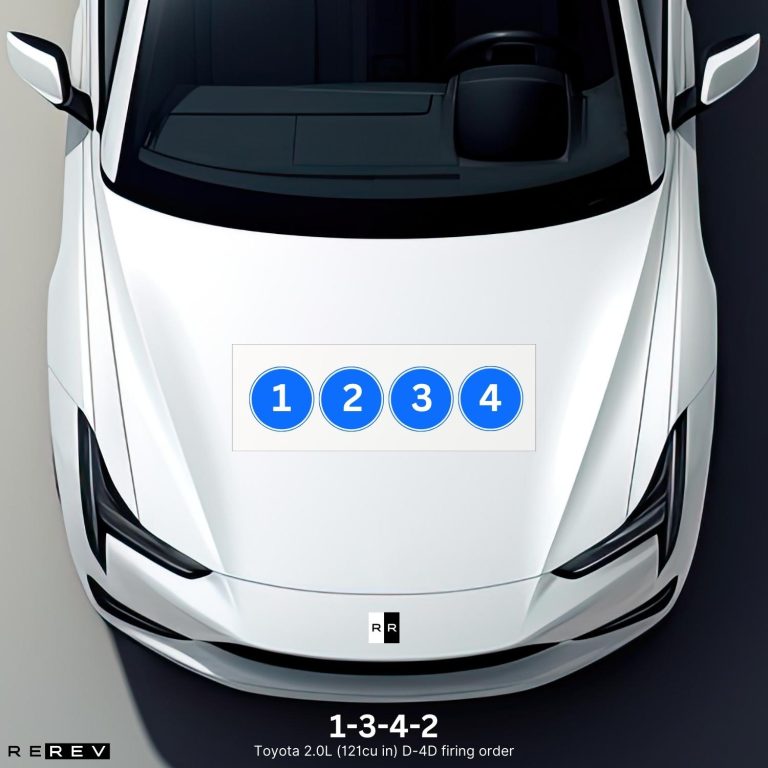Toyota 2.0L (121cu in) D—4D firing order — diagram & guide
Revitalize your drive with the Toyota 2.0L D-4D firing order.

Among Toyota’s four-cylinder engines, the 2.0-liter D-4D diesel has possibly drawn the most attention. When it came out, it was different than what the fans of the brand were used to with regular gasoline engines. So, that led to the common dilemma on the Toyota 2.0L (121 cu in) D-4D firing order and its differences when compared with the petrol counterpart.
If you own a vehicle with this engine, don’t worry – our team has gone the extra mile to give you all the relevant details. We wanted you to have all the information at your disposal in one place, which is why we’ll discuss the firing order, cylinder configuration, and other related items in this guide.
Toyota 2.0L D-4D firing order
To give you an answer right off the bat, the Toyota 2.0L D-4D firing order is 1-3-4-2, which is the same firing order that the 2.0-liter petrol engine had. However, there are significant differences between these two engines.
First of all, the diesel one doesn’t have spark plugs and uses forced induction while the petrol engine doesn’t have a turbocharger. With this in mind, the diesel variant requires a bit more effort in maintenance, which is why you need to know the firing order even though there are no spark plugs to replace.
On the other hand, you may need the firing order to check the engine’s operation one cylinder at a time, which is why we’ll explore the cylinder layout as well.
Toyota 2.0L D-4D cylinder diagram

Even though this engine is a diesel-powered four-cylinder with a turbocharger, the configuration of it is still the same. In other words, you’ll see four cylinders aligned in a straight cylinder layout looking from left to right from the front of the engine.
This means that the first cylinder is located on the left side (passenger’s side from inside the car), and the cylinders span towards the opposite side from there.
Toyota 2.0L D-4D vehicle applications
To give you a better perspective of all the cars that use this same firing pattern, we’ve decided to create a list of all the Toyota vehicles equipped with a 2.0-liter D-4D engine:
- Toyota Avensis
- Toyota Corolla
- Toyota Previa
- Toyota Land Cruiser
- Toyota Verso
- Toyota RAV4
For the wrap-up, we have to advise you to check on the fuel injectors as often as possible and it’s best to do it while checking the cylinders with the firing order. These are the most common components that wear out in this engine, so hopefully that will help make it last longer.
Our take
Finally, we have to say that the 2.0-liter diesel engine by Toyota has proved itself to be reliable and long-lasting. Well, at least now you can use the firing order specific for this engine to add up to the overall reliability, and with all that combined, you should easily get more than 250,000 miles out of it.